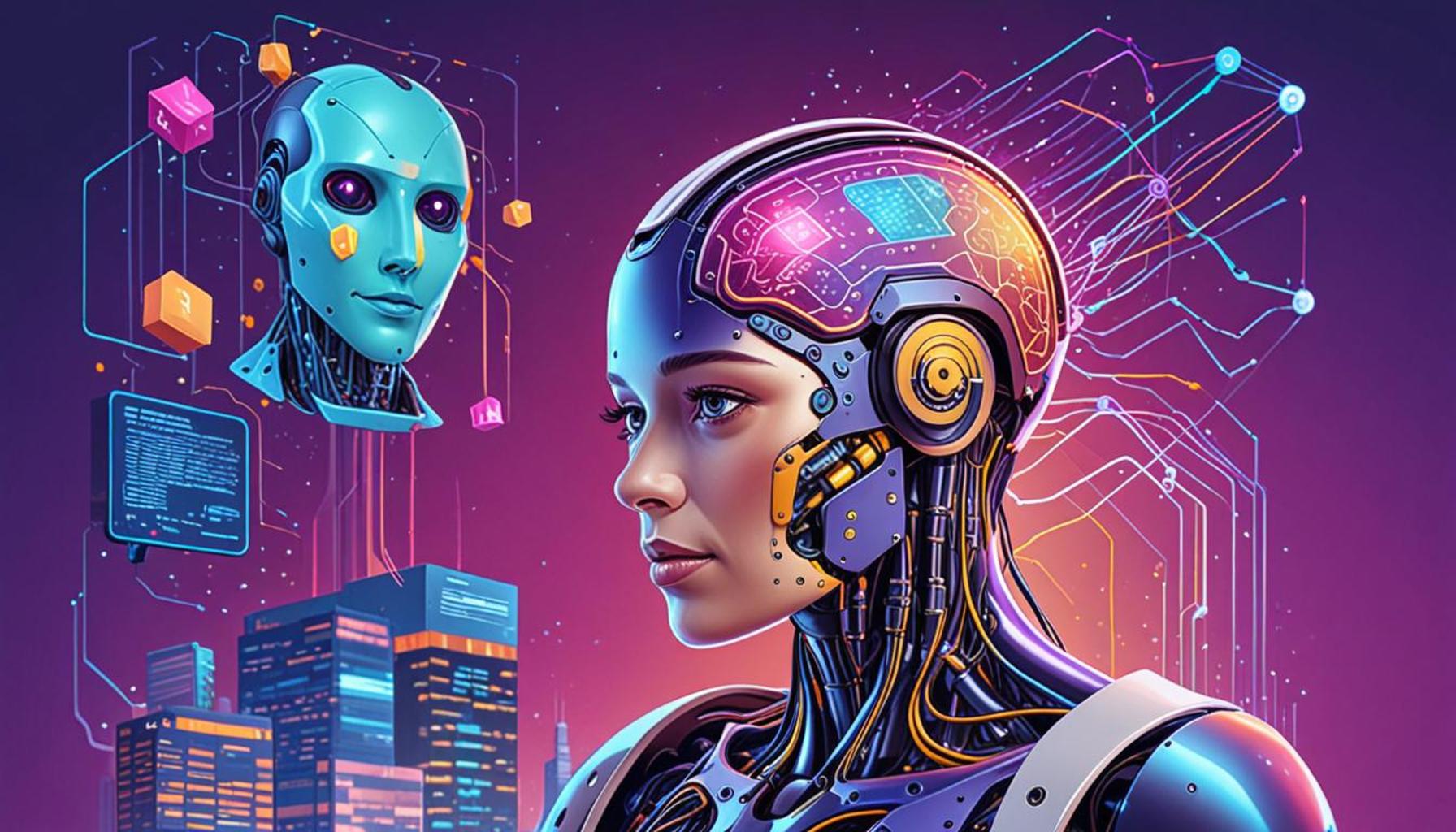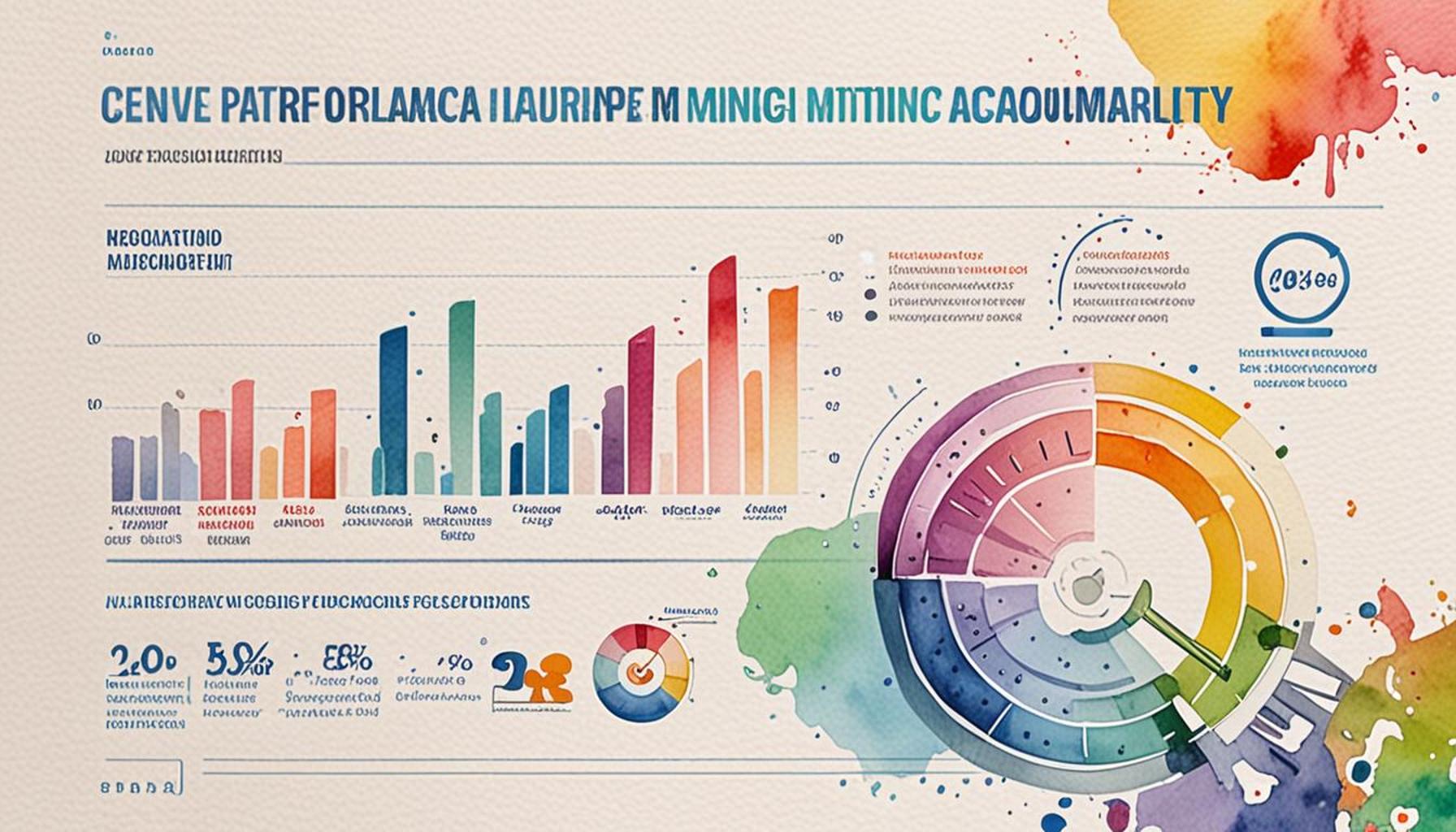How Artificial Intelligence Can Transform the Delivery of Online Government Services

The Role of AI in Modernizing Government Services
The integration of artificial intelligence (AI) into online government services is no longer a futuristic concept; it’s a present reality. As agencies embrace digital transformation, AI technologies are emerging as key players in enhancing the citizen experience and streamlining operations. Today, many citizens are experiencing a shift in how they interact with their government, making services more accessible and user-friendly.
Personalized Services
Personalized services represent a significant leap in the way government agencies cater to their constituents. AI can tailor online interactions based on individual needs and preferences. For instance, some states have implemented AI-driven platforms that track user interactions and preferences to recommend services more suited to individual needs, such as customized tax advice or tailored healthcare enrollment options. This level of personalization not only fosters engagement but also promotes a sense of ownership in the services provided.
Data Analysis
Another vital aspect of AI integration is its proficiency in data analysis. Machine learning algorithms are capable of processing massive volumes of data to reveal trends and patterns that inform policymaking. For example, AI can analyze traffic patterns and suggest infrastructure improvements, helping cities reduce congestion and improve safety. This analysis is not limited to transportation; it can also extend to public health data, enabling faster responses to emerging healthcare challenges, such as the COVID-19 pandemic, through early detection of outbreak hotspots.
24/7 Accessibility
AI technology brings the promise of 24/7 accessibility to government services. Chatbots and virtual assistants have been deployed on various governmental websites to provide real-time assistance. These AI agents can help users navigate complex processes, from obtaining permits to understanding social services, at any hour of the day. For example, a citizen in California seeking to renew their driver’s license can interact with a chatbot rather than waiting on hold, thereby expediting the process significantly.
These innovations not only create greater accessibility but also drive efficiency in service delivery. For instance, AI can significantly reduce wait times for critical services, such as renewing licenses or filing taxes, by automating routine tasks. By handling repetitive inquiries, AI allows human agents to focus on more complex issues requiring empathy and human judgment, further enhancing the quality of citizen engagement.
Moreover, AI enhances the ability of government agencies to respond to the dynamic needs of the public. By analyzing patterns in user interactions, agencies can proactively address issues and enhance overall service quality. For example, if an AI system detects an uptick in inquiries about unemployment benefits, agencies can allocate resources to address these concerns more efficiently, ensuring that help reaches those in need without unnecessary delays.
This profound transformation holds the promise of a more engaged citizenry, with information and services just a click away. As we delve deeper into how artificial intelligence can reshape online government services, intriguing opportunities await both citizens and governmental entities. The ongoing evolution of these technologies suggests a future where governmental operations are not only more efficient but also more attuned to the needs of the people they serve.
SEE ALSO: Click here to read another article
Enhancing Efficiency and Responsiveness
The infusion of artificial intelligence (AI) into online government services is revolutionizing not just accessibility, but also the overall efficiency and responsiveness of these services. As AI systems become more ingrained in government operations, they are helping to eliminate bureaucratic delays and providing real-time solutions to citizen inquiries and needs.
Automated Transaction Processing
One of the most significant advantages of AI is its ability to automate routine transaction processing. Government services traditionally involve numerous forms and paperwork that can overwhelm both citizens and administrative staff. With AI, processes such as applying for permits, licenses, and benefits can be significantly expedited. For instance, states like Virginia have begun implementing AI to automate the permitting process, allowing businesses to receive approvals much more quickly, which in turn fosters economic growth.
Predictive Analytics for Resource Management
AI also excels at predictive analytics, which allows government agencies to anticipate the needs of their constituents before they arise. By utilizing vast datasets, AI can identify trends and predict future demands, enabling proactive resource allocation. For example, cities can utilize AI to forecast peak demand for public transportation and adjust services accordingly, ensuring that enough buses and trains are available during these busy periods.
This capability can be vital during times of crisis. During the onset of the COVID-19 pandemic, for instance, several local governments utilized AI to track infection patterns and allocate healthcare resources where they were needed most, showcasing how data-driven insights can lead to timely and relevant interventions.
Cost Reduction and Resource Optimization
The implementation of AI technologies in government services does not just enhance user experience; it also leads to significant cost reduction and resource optimization. By automating repetitive tasks and simplifying workflows, agencies can lower operational costs and reallocate funds to more pressing needs. According to a study by McKinsey, governments that effectively utilize AI could potentially save $1 trillion over the next decade through improved efficiencies and streamlined operations.
Moreover, cost savings can also be realized through reduced fraud and errors in service delivery. AI’s advanced algorithms can sift through vast amounts of data to detect anomalies and flag potential fraudulent applications or claims, thereby safeguarding taxpayer money and ensuring that services are delivered to those who are genuinely eligible.
Embracing Change for a Better Tomorrow
As government agencies strive to become more agile and responsive to the needs of citizens, harnessing the power of AI becomes imperative. The shift towards AI-driven services allows for a more dynamic relationship between government entities and constituents. The potential for AI to transform service delivery reshapes not just how citizens receive help but also how they perceive their government. By embracing these technologies, agencies position themselves as forward-thinking, adaptive, and eager to meet citizens where they are.
Overall, the transformation of government services through artificial intelligence is just beginning, with exciting advancements on the horizon. The path ahead presents numerous opportunities for innovation, but also challenges that must be navigated to ensure equitable implementation across diverse populations.
How Artificial Intelligence Enhances Online Government Services
Artificial Intelligence (AI) is revolutionizing the way government services are delivered online. By harnessing AI technologies, governments can streamline processes, improve service accessibility, and enhance citizen engagement. One of the most significant advantages of implementing AI in online government services is the ability to provide personalized experiences for citizens. This personalization ensures that citizens receive relevant information tailored to their unique needs, which can foster a more positive interaction with government services.For instance, AI chatbots can offer instant support and answers to common inquiries, reducing wait times and freeing up human resources for more complex issues. These chatbots operate 24/7, ensuring that assistance is available whenever needed, which ultimately leads to increased efficiency in service delivery.Furthermore, AI can analyze large datasets to identify patterns and trends, helping governments to proactively address issues before they escalate. For example, predictive analytics can be used to anticipate service demands, allowing government agencies to allocate resources more effectively. This data-driven approach not only improves operational efficiency but also enhances the overall quality of services provided to citizens.The integration of AI in online government services also promotes transparency by enabling real-time tracking and reporting of government activities. Citizens can access information regarding the status of their requests or applications through AI-powered platforms, fostering trust in public institutions. Additionally, AI can assist in detecting fraudulent activities across various service areas, ensuring that resources are utilized appropriately and effectively.As we continue to explore the potential of AI, it is evident that its role in transforming online government services is not just a trend, but a necessary evolution. The future of governance will undeniably be more intertwined with technological advancements, paving the way for smarter and more responsive public service delivery.
| Category | Advantages |
|---|---|
| Personalized Services | Tailored interactions enhance user experience. |
| 24/7 Support | AI chatbots provide instant assistance at any time. |
| Data-Driven Insights | Analyzing data helps in proactive issue resolution. |
| Transparency | Real-time tracking builds trust in government operations. |
As governments increasingly adopt AI technologies, they not only enhance service delivery but also adapt to the changing needs of their citizens. The ongoing evolution in this field indicates a promising horizon for modern governance.
CHECK OUT: Click here to explore more
Revolutionizing User Experience and Accessibility
While enhancing efficiency and responsiveness is crucial, artificial intelligence (AI) also plays a pivotal role in revolutionizing the user experience and accessibility of online government services. By employing AI technologies, government agencies can create interfaces that are not only user-friendly but also personalized, catering to the diverse needs of the population.
Personalization Through AI Algorithms
AI can significantly improve the personalization of government services. Utilizing machine learning algorithms, government websites can offer tailored information and recommendations based on an individual’s demographic and behavior patterns. For example, a citizen accessing a state service portal might receive different prompts based on their profile, such as reminders for permit renewals or suggestions for benefits they may qualify for. This personalization ensures that individuals receive relevant information efficiently, reducing frustration and increasing satisfaction.
Chatbots and Virtual Assistants
Another significant advancement in making government services more accessible is the introduction of chatbots and virtual assistants. These tools provide 24/7 support, enabling citizens to get answers to their inquiries instantaneously, even outside of regular office hours. The city of San Francisco has integrated AI-powered chatbots on its website to handle a variety of queries—from parking permits to public health information—streamlining communication between the government and its constituents. This instant support not only saves time for agency staff but also empowers citizens to solve problems and access services more readily.
Language and Accessibility Improvements
AI’s impact extends beyond conventional user interfaces; it also enhances accessibility for individuals with disabilities and those who speak different languages. Government platforms can implement natural language processing (NLP) to offer real-time translation services, ensuring non-English speakers can navigate online services without barriers. Additionally, AI-driven tools can provide voice commands and screen readers for visually impaired citizens, allowing them to complete tasks independently. For instance, New York City’s Department of Health has started using AI to improve website accessibility, making health resources more available to everyone.
Informed Decision-Making for Policy Development
AI is not just transforming service delivery; it also aids in creating data-driven policy decisions. By analyzing large sets of data from citizen interactions and service usage, government bodies can determine which areas require attention or improvement. This capability is crucial for tailoring policies that reflect the needs of the community. For instance, the government of Canada used AI analytics to understand the migration patterns of its citizens during the pandemic, leading to informed decisions about resource allocation for public health services.
Engaging the Community
Moreover, AI facilitates better engagement between government and citizens. Through sentiment analysis tools, agencies can understand public opinion on various issues, enabling a more responsive approach to community concerns. This engagement allows citizens to have a voice in policy-making, creating a collaborative atmosphere that fosters trust and accountability in government. Programs like Participatory Budgeting in cities like Chicago and Boston highlight how AI can analyze public feedback to inform budget allocations that reflect community priorities.
As the adoption of AI continues to evolve within government services, the concerted efforts to create a more engaging, accessible, and personalized experience for citizens will be paramount. With these advancements, the days of bureaucratic red tape are slowly fading, ushering in a new era of transparency and responsiveness in public service delivery.
ADDITIONAL INSIGHTS: Expand your understanding here
Conclusion
In conclusion, the integration of artificial intelligence (AI) into online government services has the potential to create a transformative impact that enhances efficiency, accessibility, and user engagement. As we’ve explored, AI’s capabilities in personalization not only cater to individual user needs but also streamline interactions with government systems, making processes smoother and less burdensome. The advent of chatbots and virtual assistants signifies a monumental shift toward 24/7 support, ensuring that citizens have timely access to the information they require, thereby fostering better public service experiences.
Moreover, AI’s role in improving language accessibility and providing innovative tools for individuals with disabilities showcases its ability to create equitable access for all citizens, regardless of their background or abilities. By leveraging data analytics, governmental bodies can make informed policy decisions that resonate with community needs, driving a more inclusive approach to governance. The sentiment analysis tools that interpret public opinion further enhance this relationship between government and citizen, cultivating an environment of collaboration and trust.
As we move forward, the continued evolution and adoption of AI technologies within public services promise not only to eliminate bureaucratic inefficiencies but also to pave the way for a more transparent and accountable government. The challenges ahead will require thoughtful implementation and ethical considerations, ensuring that these technologies serve the public good. For those intrigued by this dynamic intersection of technology and governance, further investigation into successful case studies and innovations across the globe can provide valuable insights into the future of digital government service delivery.


